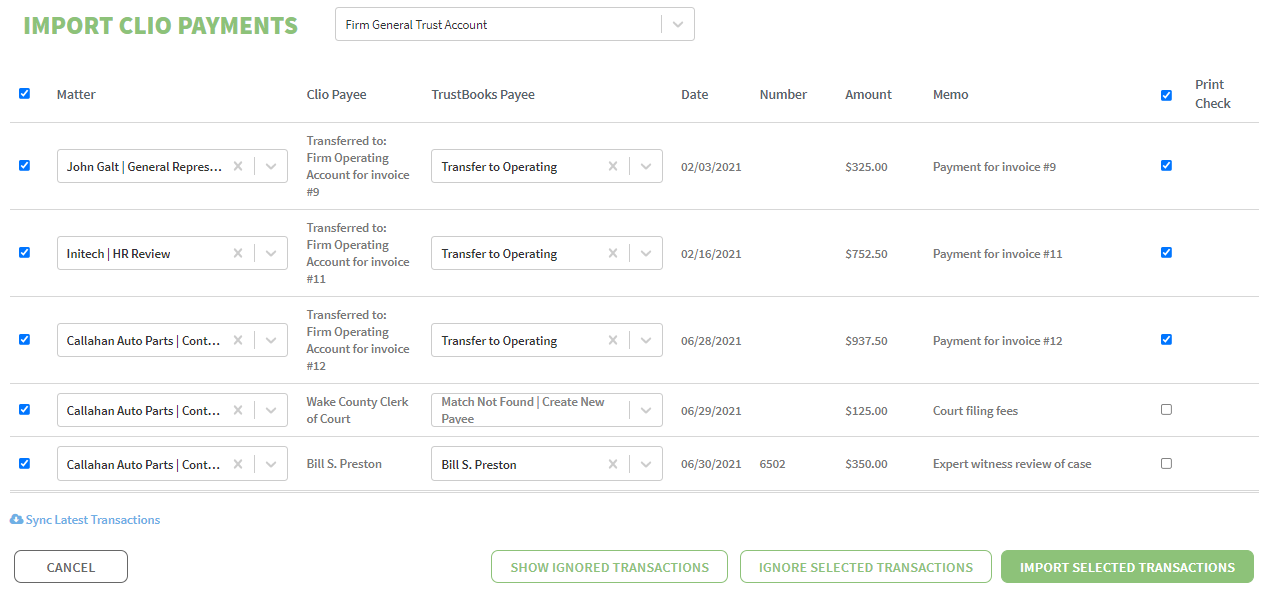Every state bar association requires that an attorney reconcile their trust bank statement to their clients’ individual balances either monthly or quarterly. This reconciliation process is one of the more important rules in trust account management. It’s also one of the rules that attorneys most often overlook, invoking unfortunate consequences. To prevent you from doing the same, let’s break this regulation down and walk through, at a very high level, an example of what the reconciliation process should look like.
There are three components to the reconciliation process: the trust ledger, the client ledgers, and the trust bank statement. The trust ledger provides a summary of all the transactions flowing into and out of a trust account. The client ledgers are created by taking the trust ledger a step further, assigning each transaction to a specific client and grouping together all the trust account activity associated with each individual client. Both the trust ledger and the client ledgers should be maintained by a firm’s internal recordkeeping system, and their balances should always match. The final component in a trust reconciliation—the trust bank statement—is generated by the bank where the trust account is held and it provides third party verification of the transactions posted to the trust account.
In order to comply with state bar regulations, the trust bank statement must be reconciled with the client ledgers (and thereby the trust ledger) on a quarterly, or even monthly, basis. What does this mean, exactly?
Assume that a lawyer has three clients with balances in a trust account as of September 30, 2017. The lawyer should have three separate client ledgers tracking the cash flow into and out of the trust account—one for each client. At the end of the month, the lawyer will add up the balances of the three client ledgers and reconcile, or compare, this total to the balance given by the trust bank statement.
What makes this process more complicated is the fact that, at times, the balance on the trust bank statement will need to be adjusted before reconciliation can begin. Oftentimes there will be transactions that have occurred but that have not yet cleared the trust bank account, and so a lawyer will need to alter the end balance on the trust bank statement in order to account for these missing transactions. For example, if a check was written and sent to a payee prior to the month’s end but was not yet deposited by the payee, the check would be recorded in the client ledger but it would not yet have shown up on the trust bank statement. The lawyer, then, would need to adjust the trust’s bank statement balance to account for the pending outgoing funds. The reconciliation would look something like this:
| Bank Records: | Lawyer Trust Records: | ||
| Bank Balance @ 9/30/17 | $1,460.00 | Client Alvin Balance @ 9/30/17 | $750.00 |
| Client Theodore Balance @ 9/30/17 | $110.00 | ||
| Reconciling Items: | Client Simon Balance @ 9/30/17 | $400.00 | |
| Plus: Deposits in Transit | $0.00 | ||
| Minus: Outstanding Checks | ($200.00) | ||
| Adjusted Bank Balance @ 9/30/17 | $1,260.00 | Total Client Balances @ 9/30/17 | $1,260.00 |
| Trust Ledger Balance @ 9/30/17 | $1,260.00 |
While this process may look straightforward, many attorneys fail to properly perform this step on a regular basis. After all, in many states, the state bar only requires that a lawyer perform this level of in-depth reconciliation on a quarterly basis, accepting a two-way reconciliation between the trust ledger and the bank account statement in the months in between. Nevertheless, a wise lawyer will reconcile down to the client ledgers every month. With proper processes in place, this three-way reconciliation requires very little extra time, but it has the potential to prevent a great deal of stress.
Looking to make your firm’s three-way trust reconciliation a more regular occurrence? You may first want to update and optimize your trust accounting software. Consider trying TrustBooks, which automatically generates a three-way trust reconciliation every time you complete a reconciliation—no extra steps required.










